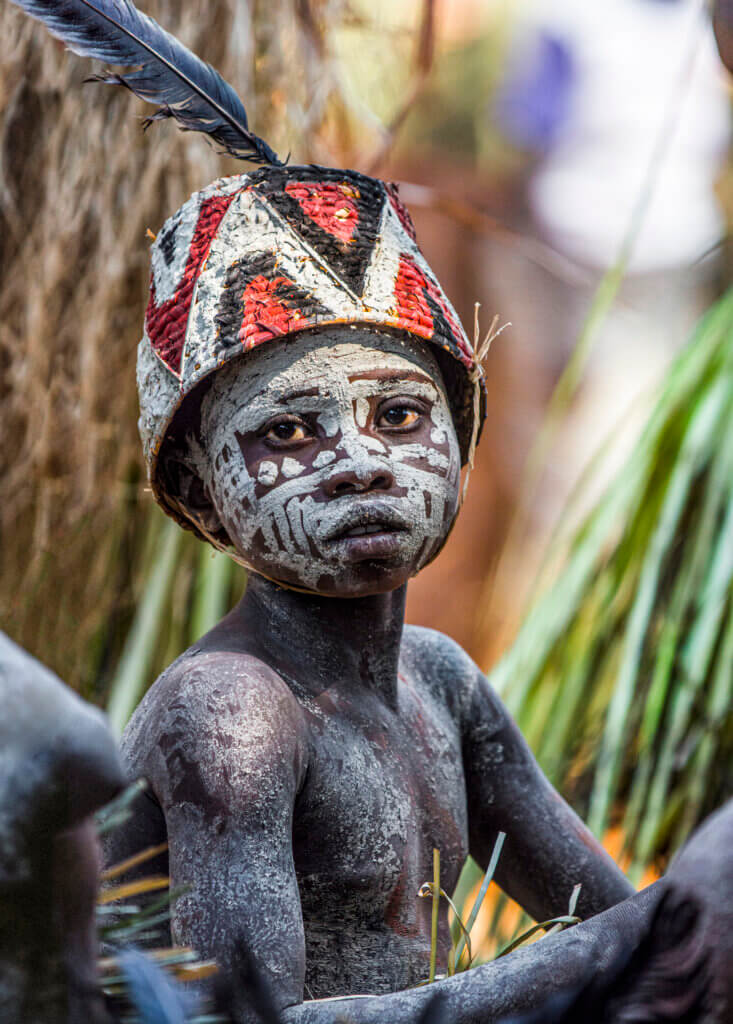
FROM THE FOREST AS MEN
Salampasu Male Initiation
In the sacred forest beyond the village of Mbangu, near the border of Angola, the final day of the boys’ Mukanda initiation takes place. In a small grass hut at the forest’s edge, fifteen initiates gather, their faces peering out through the thatch, like birds in a nest.
The young initiates emerge out of the hut in a long line, their raffia skirts rustling continuously, a sound that is both hypnotic and otherworldly. The boys’ faces and bodies are painted with red ocher and white chalk, as are the raffia hats on their heads.
Suddenly a group of masked figures emerges from the forest. The masks, varied in shape and abstract in form are made of wood, leather, and woven raffia. The ten-foot-tall Mukungu-a-nkilli mask, shaped like a witch’s hat bristling with spikes, strikes fear in the initiates. The enormous Tchikunza mask, resembling a priest’s mitre, wields a long knife as he leaps about in a terrifying fashion, instilling discipline and order. Each mask plays a different role in teaching the initiates skills for life.
For three months, the boys have been isolated in the forest and trained by their masked guardians responsible for guiding then into the next stage of their lives. Following their circumcision, they are taught the things they need to know about adult life: obedience and discipline, survival skills, craftsmanship, woodcarving and mask making, weaving, basketry, and traditional dance and song. The young boys are deeply attached to their masked mentors.
At the culmination of their training, each boy is then carried out of the sacred forest on the shoulders of his masked mentor, returning in single file back to the village, where the initiates’ families are waiting. Their three months in the forest after the circumcision have been full of secret ordeals, and so family members do not even know if their children had made it through the initiation. The boys who have successfully graduated their initiation perform for the village, showing off the dances they have learned in their new status as warriors.
The elders told us that in the olden days there would have been over one hundred fifteen-year-old boys undergoing initiation. Today the number of initiates has diminished due to the influence of the Roman Catholic Church, which prohibits traditional practices perceived as drawing on the powers of witchcraft.